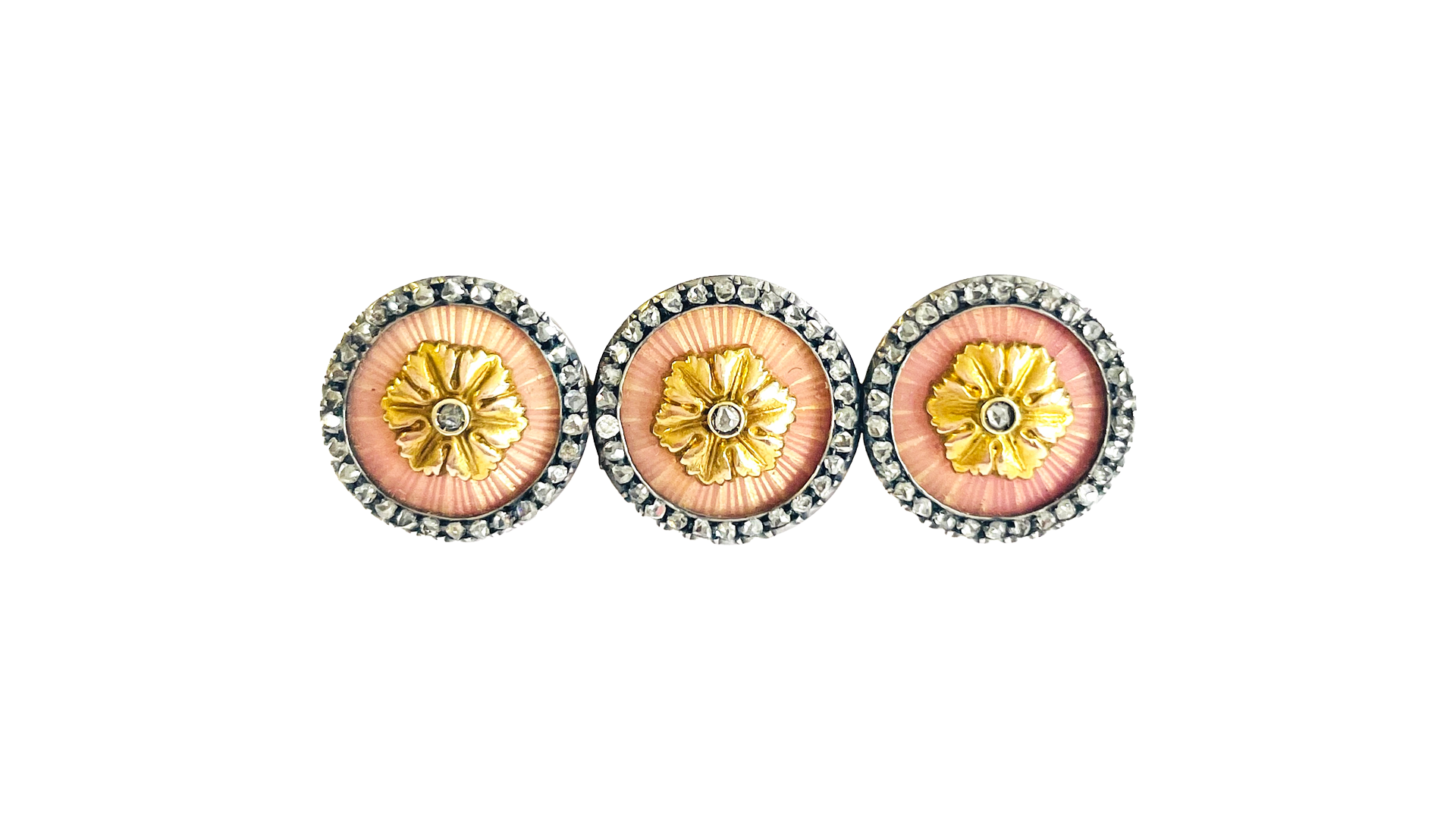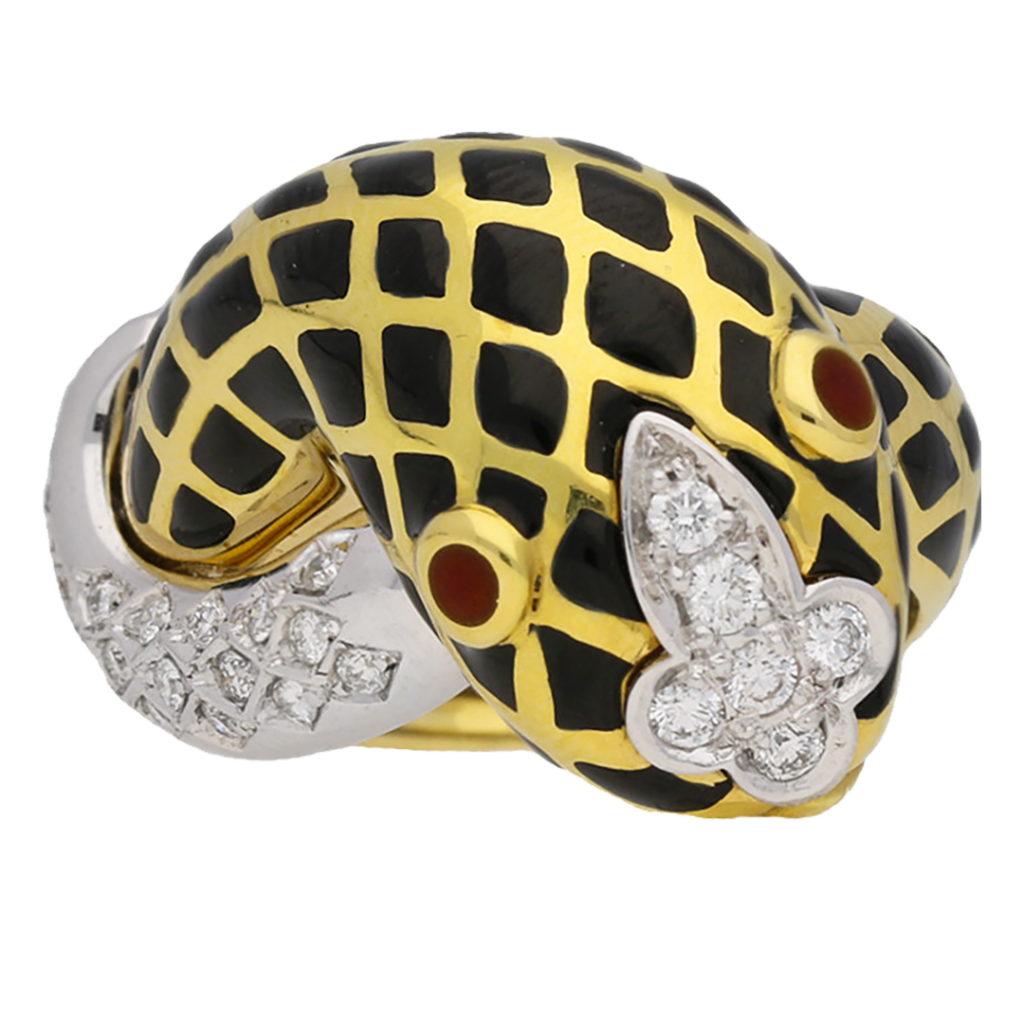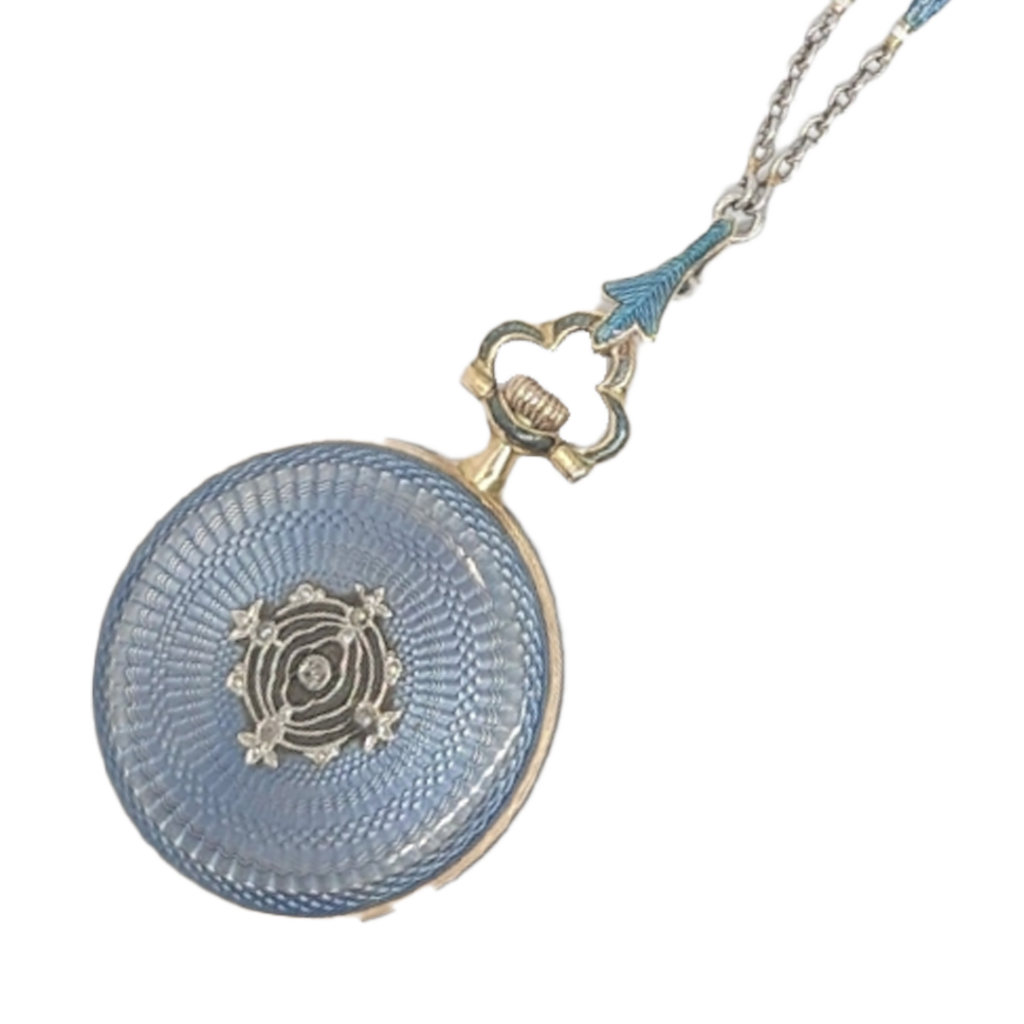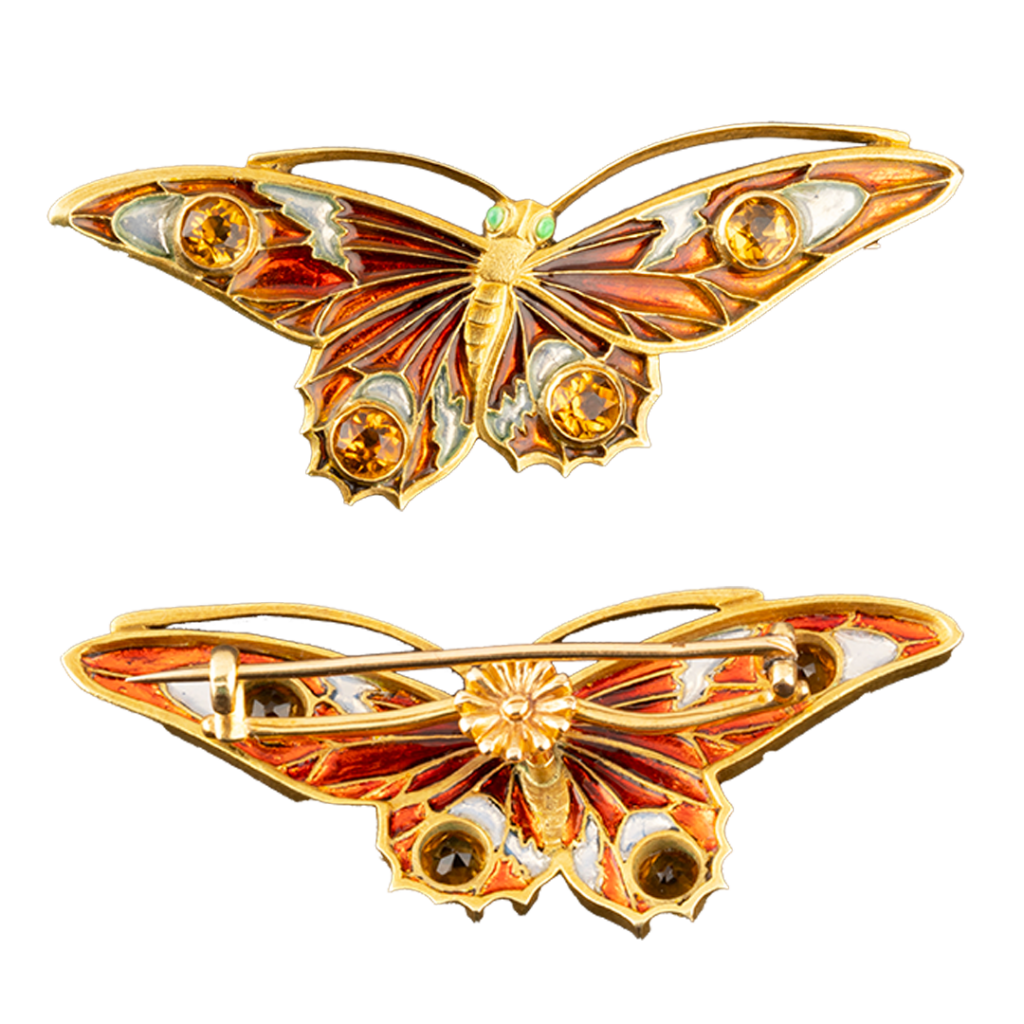The vibrant colors of enamel have been enhancing jewelry designs since ancient times, starting with the Mycenaean’s around 1400 BCE. The Greeks as well as artists in the Byzantine Empire were also skilled at enameling. The colorful technique has remained popular in the years since then, with enamel sometimes being used to add color to jewelry in addition to, or instead of, gemstones. While there are several styles of enameling, each bringing its own characteristics to a piece of jewelry, the basic process is the same: Powdered glass is fused onto a metal background by applying extremely high heat that melts the powder. The heat can be applied with a hand held torch, or by putting the piece in a furnace and “firing” it, which may need to be done several times in the process of enameling a piece. Now let’s take a look at the different types of enameling.
Champlevé, which means “raised fields” in French, is a frequently used enameling technique. It is created by hollowing out a design in the metal by carving, etching, or casting. The hollowed out spaces are then filled with powdered enamel until they are flush with the raised metal. Next the piece is baked and then polished. The metal stands out as a part of the design adding a textural element against the smoothness of the enamel. Champlevé enamel is thought to have originated with the Celtics in about 400 BCE. It was particularly popular in the 1100s, during which time many enamel workshops were set up in Limoges, France. The city was a hub for enameling until the 1300s when during the 100 Years War it was wiped out by invaders.
Cloisonné, from the French word “cloisons”, which means partitions, is a form of enameling that historians believe started in the Middle East and worked its way through the Byzantine Empire and Asia. In this form of enameling, thin metal strips or wires of gold, silver, brass or copper are twisted and bent into a pattern that is soldered to a metal surface. The partitions are then filled with enamel. Next the item is fired, then ground smooth and polished. The thin metal wires that are seen in the finished piece create the final pattern.
Guilloché is a term that is used when engraving and enameling are paired. It is a technique that started in the mid 1700s when silversmiths used ornamental lathes that were mechanized to create repetitive and intricate patterns in metal. Waves, ripples, sun rays and lines were popular motifs. The rose engine lathe, which was invented sometime in the late 17th or early 18th century, made precision engraving faster and easier. The metal surface was covered with enamel and then heated and polished to a glass like shine allowing the engraved metal pattern to show through the enamel, creating guilloché. The jewelry workshop of Fabergé used guilloché. extensively in their famed eggs and other objets.
Plique-à-jour, French for “letting in daylight”, is a specialized type of enamel work that was used extensively in Art Nouveau jewelry and objets. It creates an effect similar to a stained glass window. The technique was often used for butterfly or dragonfly wings as well as other naturalistic themes. The spaces for the enamel are created using a foil metal backing that will be removed when the enameling is finished, which is painstakingly time consuming as the enamel is applied in thin layers. The backing may be peeled away or sometimes an acid is used to remove it. Plique-à-jour is more fragile than most other enamels because it has no backing and it has a delicateness to it that other enamels do not have.
Now, when you look at a piece of jewelry with enamel, you’ll have a new appreciation for the artistry of this jewelry making technique.
Featured image (top of page): Antique rose pink guilloché enamel, gold, rose cut diamond, brooch made up of three buttons, courtesy Ernst Faerber (@ernstfaerber).
Authored by Amber Michelle




